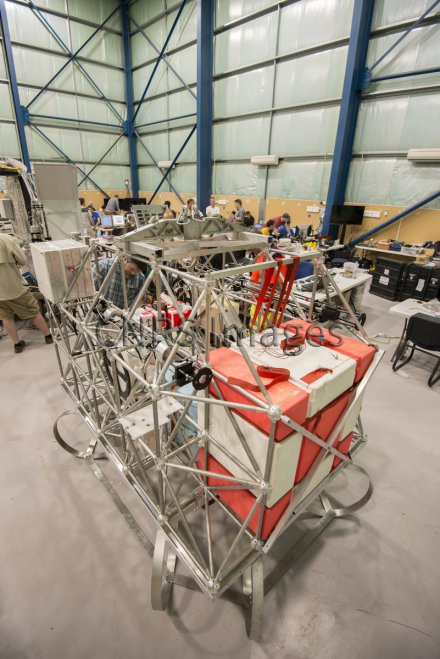Production year
2017

© Sébastien CHASTANET / CNES / OMP / IRAP / UT3 / CNRS Images
20170104_0059
The CLIMAT gondola being prepared at the balloon launch base in Alice Springs, in Australia. The red and white object is the Aircore instrument developed by the dynamic meteorology laboratory (Labo de Météo Dynamique - LMD) in Paris. This instrument performs a form of "air coring", sucking in air that is subsequently analysed on the ground in order to reveal the respective concentrations of the various atmospheric constituents. The CLIMAT mission ( Combination of Lasers and Instruments for in situ Measurement of the Atmosphere of Earth) concerns a group of experiments by French and European laboratories aimed at furthering research into atmospheric physics and chemistry. CLIMAT is a 240 kg gondola, carried under a 150,000 cu. m balloon to a ceiling altitude of 33 km. For example, its 2015 flight enabled scientists to identify a 10% increase in methane in columns between 0 km and 15 km between 2000 and 2015; this important finding was subsequently reported at the COP21 climate conference.
The use of media visible on the CNRS Images Platform can be granted on request. Any reproduction or representation is forbidden without prior authorization from CNRS Images (except for resources under Creative Commons license).
No modification of an image may be made without the prior consent of CNRS Images.
No use of an image for advertising purposes or distribution to a third party may be made without the prior agreement of CNRS Images.
For more information, please consult our general conditions
2017
Our work is guided by the way scientists question the world around them and we translate their research into images to help people to understand the world better and to awaken their curiosity and wonderment.